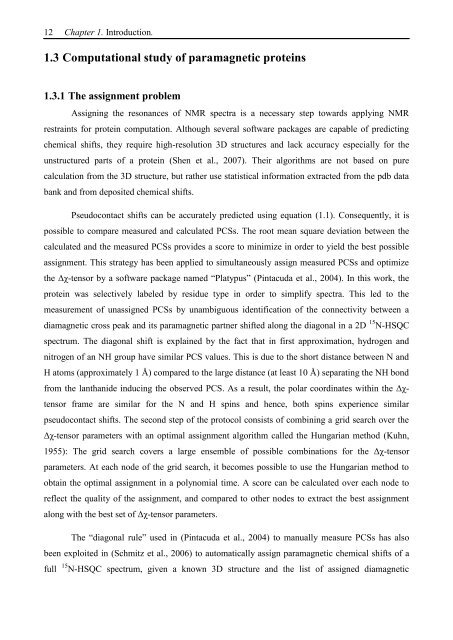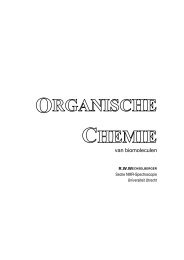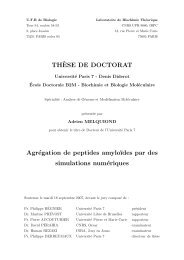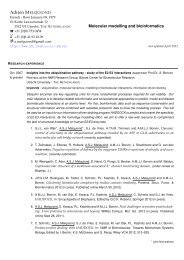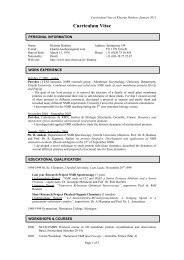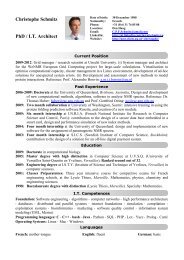Thesis Title: Subtitle - NMR Spectroscopy Research Group
Thesis Title: Subtitle - NMR Spectroscopy Research Group
Thesis Title: Subtitle - NMR Spectroscopy Research Group
You also want an ePaper? Increase the reach of your titles
YUMPU automatically turns print PDFs into web optimized ePapers that Google loves.
12 Chapter 1. Introduction.<br />
1.3 Computational study of paramagnetic proteins<br />
1.3.1 The assignment problem<br />
Assigning the resonances of <strong>NMR</strong> spectra is a necessary step towards applying <strong>NMR</strong><br />
restraints for protein computation. Although several software packages are capable of predicting<br />
chemical shifts, they require high-resolution 3D structures and lack accuracy especially for the<br />
unstructured parts of a protein (Shen et al., 2007). Their algorithms are not based on pure<br />
calculation from the 3D structure, but rather use statistical information extracted from the pdb data<br />
bank and from deposited chemical shifts.<br />
Pseudocontact shifts can be accurately predicted using equation (1.1). Consequently, it is<br />
possible to compare measured and calculated PCSs. The root mean square deviation between the<br />
calculated and the measured PCSs provides a score to minimize in order to yield the best possible<br />
assignment. This strategy has been applied to simultaneously assign measured PCSs and optimize<br />
the Δχ-tensor by a software package named ―Platypus‖ (Pintacuda et al., 2004). In this work, the<br />
protein was selectively labeled by residue type in order to simplify spectra. This led to the<br />
measurement of unassigned PCSs by unambiguous identification of the connectivity between a<br />
diamagnetic cross peak and its paramagnetic partner shifted along the diagonal in a 2D 15 N-HSQC<br />
spectrum. The diagonal shift is explained by the fact that in first approximation, hydrogen and<br />
nitrogen of an NH group have similar PCS values. This is due to the short distance between N and<br />
H atoms (approximately 1 Å) compared to the large distance (at least 10 Å) separating the NH bond<br />
from the lanthanide inducing the observed PCS. As a result, the polar coordinates within the Δχ-<br />
tensor frame are similar for the N and H spins and hence, both spins experience similar<br />
pseudocontact shifts. The second step of the protocol consists of combining a grid search over the<br />
Δχ-tensor parameters with an optimal assignment algorithm called the Hungarian method (Kuhn,<br />
1955): The grid search covers a large ensemble of possible combinations for the Δχ-tensor<br />
parameters. At each node of the grid search, it becomes possible to use the Hungarian method to<br />
obtain the optimal assignment in a polynomial time. A score can be calculated over each node to<br />
reflect the quality of the assignment, and compared to other nodes to extract the best assignment<br />
along with the best set of Δχ-tensor parameters.<br />
The ―diagonal rule‖ used in (Pintacuda et al., 2004) to manually measure PCSs has also<br />
been exploited in (Schmitz et al., 2006) to automatically assign paramagnetic chemical shifts of a<br />
full 15 N-HSQC spectrum, given a known 3D structure and the list of assigned diamagnetic


